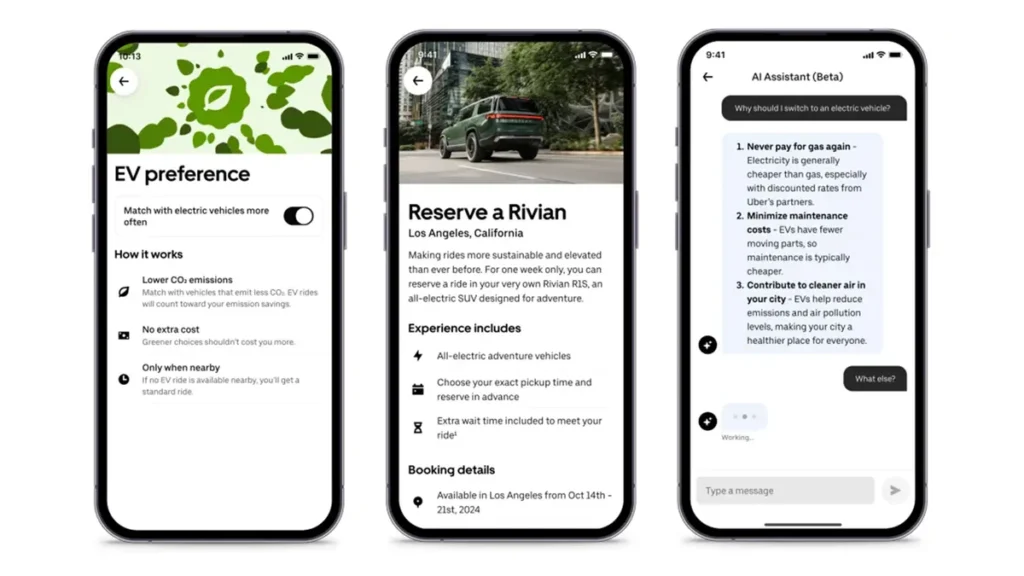How Uber’s EV Shift Could Open New Doors for Rivian in Ridesharing

The EV transition is accelerating, and Uber is betting big on electric vehicles to shape the future of its ridesharing platform. As governments and consumers push for greener solutions, Uber unveils five new strategies to convince more riders to choose its EV options. Here’s a closer look at what’s coming and what it could mean for Rivian and the broader EV industry.
More EV Choices
Uber is expanding its fleet of electric vehicles, partnering with automakers to provide a wider variety of EV options for riders. This will include vehicles from leading manufacturers like Tesla, Polestar, and Hyundai. Rivian, being a trailblazer in the electric space with its premium, adventure-ready vehicles, may well be a future candidate for partnerships or fleet adoption by Uber. With increasing demand for spacious, luxurious EVs, Rivian’s all-electric trucks and SUVs would fit perfectly into this vision.
Lower Fares for EV Rides
To encourage more riders to choose electric, Uber plans to make fares for EV rides more competitive. By lowering the price point, Uber is betting that customers will opt for a quieter, cleaner ride over conventional gas-powered vehicles. This move could help normalize EVs in ridesharing and pave the way for further electrification of Uber’s global fleet. Lower fares also make riding in electric vehicles, including models like the Rivian R1S or R1T, more accessible to the average user.

Exclusive Features for EV Rides
Uber is rolling out special in-app features exclusive to electric vehicle rides, creating a more tailored and enjoyable experience. These might include eco-friendly rewards, enhanced noise control, and in-car climate settings. For Rivian, known for its technology-driven interiors and focus on customer experience, this highlights a potential alignment with Uber’s push for next-gen in-ride experiences.
Charging Incentives for Drivers
Uber isn’t just making life easier for riders; it’s also incentivizing drivers to switch to EVs by offering better access to charging stations. The company plans to build partnerships with charging providers and offer financial incentives for drivers who choose to go electric. Rivian, with its own expanding charging network, could find synergies with Uber as both companies seek to support EV infrastructure growth.
Sustainability Initiatives
Uber has committed to becoming a fully zero-emission platform by 2040. This aggressive timeline will require major shifts in both consumer behavior and the ridesharing industry. As a leader in sustainable, adventure-focused electric vehicles, Rivian sets emissions-free mobility standards that align with Uber’s long-term goals. Rivian’s commitment to eco-conscious design and performance could play a role in shaping the future of ridesharing as these sustainability initiatives evolve.
What’s Next?
Uber’s push for electric rides is part of a larger shift in the transportation industry, and it’s only a matter of time before we see more collaborations between ridesharing companies and innovative EV brands like Rivian. Whether it’s through strategic partnerships, fleet expansions, or new tech integrations, Rivian’s electric vehicles could be at the forefront of this growing trend.
For Rivian owners and enthusiasts, the intersection of ridesharing and EV adoption signals a future where Rivian vehicles could become more prominent on the streets, not just for personal adventures but as part of an increasingly electric urban landscape.
